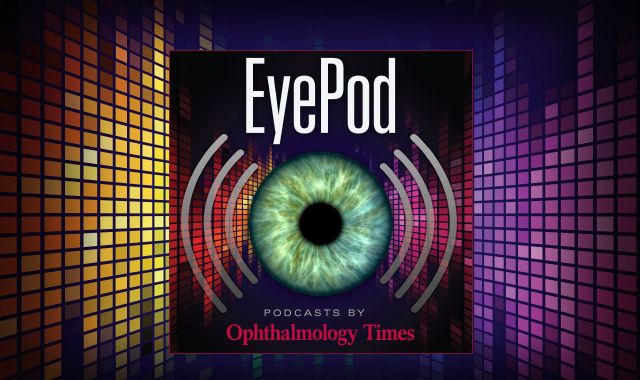Publication
Article
Digital Edition
Unveiling genetic distinctions between reticular pseudodrusen and drusen
Key Takeaways
- RPD and drusen have distinct genetic profiles, challenging the view of them as manifestations of the same disease process.
- AI models were used to identify and quantify RPD and drusen, enhancing the study's power and efficiency.
Insights from a genome-wide association study identify novel genetic loci
(Image Credit: AdobeStock/Mongkolchon)

Age-related macular degeneration (AMD) is a leading cause of visual impairment among older adults, characterized by the presence of drusen. In recent years, the importance of reticular pseudodrusen (RPD) became clear, as their presence is associated with progression to late AMD.1 As a result, they were recently added to the AMD classification system.2 Despite their clinical similarities, these phenotypes have distinct profiles: Their anatomic location is different (RPD appear above the retinal pigment epithelium and drusen below)3; their lipid composition is different4; and they appear in conditions where drusen are not part of the phenotype.5
Although several genetic associations have been identified for AMD, particularly CFH and ARMS2-HTRA1,6,7 the genetic associations for RPD remain unclear. Multiple studies have reported varying associations, including CFH and ARMS2-HTRA1, but the research results have been inconsistent.
The aim of our study was to identify genetic associations that are unique to RPD. To achieve this, we conducted a genome-wide association study (GWAS), the first of its kind involving participants with RPD. This methodology allowed us to examine the entire genome for genes potentially associated with RPD, unlike previous studies that focused solely on genes known to be linked to AMD. This study was presented at the Angiogenesis, Exudation, and Degeneration 2025 Annual Meeting held virtually in February and was accepted for publication in the American Journal of Ophthalmology.
Methods
In our study, we used a series of artificial intelligence (AI) models to identify subjects with RPD, those with drusen, and controls from the UK Biobank, a large data set of UK participants. The models identified the subjects based on optical coherence tomography images. However, the models went beyond just identifying them: They allowed us to quantify the load of RPD and drusen in the retinas of each participant.
This was followed by a rigorous validation of these cohorts by 5 retina specialists from Moorfields Eye Hospital in London, England. We then analyzed genetic data from these cohorts, distinguishing those with RPD from those with drusen. Using advanced GWAS techniques, we identified specific
genetic loci associated with each phenotype.
Results
The study included 1787 participants identified by AI and validated by the retina specialists. These included 439 participants with RPD (of those, 71 with only RPD and no drusen—pure RPD—the largest number in any published data set), 768 with drusen (400 with pure drusen), and 1037 controls. Our analysis of the load of pure RPD, pure drusen, and controls revealed several key genetic differences between RPD and drusen. Notably, drusen were associated with both ARMS2-HTRA1 and CFH, the most well-known AMD associations. In contrast, RPD showed a strong association only with ARMS2-HTRA1. Additionally, 3 rare genetic loci were linked to RPD: PARD3B, ITPR1, and SLN. All 3 are expressed in the retina.
Interestingly, when we examined the combination of mixed RPD and drusen (rather than pure RPD and pure drusen), we found similar associations for both phenotypes CFH and ARMS2-HTRA1. This aligns with previous studies that focused solely on patients with AMD and a mix of drusen and RPD. We believe that our approach of analyzing pure RPD helped reveal these genetic differences.
Finally, we adopted a binary approach, examining the presence of RPD and drusen without considering their load. This time, we found no associations with RPD, only with drusen. This likely resulted from the small number of RPD in our cohort. Including the load (or the number of RPD) in the other analyses enhanced the power of our study, which was now lacking.
Implications
Our study findings suggest distinct genetic pathways underpinning RPD and drusen, challenging the traditional view that RPD and drusen are merely different manifestations of the same disease process. The findings also suggest potential pathways for targeted therapies.
The identification of unique genetic markers for RPD and drusen has significant implications for the understanding and treatment of AMD. By recognizing these distinctions, we can move toward more personalized treatment strategies, potentially improving outcomes for patients with these conditions. Furthermore, our findings highlight the importance of considering RPD and drusen as distinct entities in clinical trials and therapeutic development.
Our study highlights the importance of looking at pure RPD to identify distinctions between these phenotypes. When we analyzed RPD in the presence of drusen, we did not observe the same associations. This difference likely resulted from the large number of drusen in this mixed group.
One notable aspect of this study is using AI to quantify RPD. The difference between analyzing the load of RPD and using a binary approach demonstrates that examining the load of this phenotype allows for further discovery. Human quantification of RPD would have been either impossible or highly time-consuming, indicating how AI can assist in the research for new findings.
In summary, by delineating the genetic underpinnings of RPD and drusen, we pave the way for innovative research and therapeutic strategies that could transform patient care. Future studies should focus on validating the novel loci identified in our study. If our findings are confirmed, they could serve as therapeutic targets for this important phenotype.

Roy Schwartz, MD, PhD
E: royschwartz@gmail.com
Schwartz is an ophthalmologist and retina specialist at Moorfields Eye Hospital in London, England. Schwartz serves as medical adviser for Apellis Pharmaceuticals. He declares no conflicts of interest related to this article.
References
Hogg RE, Silva R, Staurenghi G, et al. Clinical characteristics of reticular pseudodrusen in the fellow eye of patients with unilateral neovascular age-related macular degeneration. Ophthalmology. 2014;121(9):1748-1755. doi:10.1016/j.ophtha.2014.03.015
Agrón E, Domalpally A, Chen Q, Lu Z, Chew EY, Keenan TDL; AREDS and AREDS2 Research Groups. An updated simplified severity scale for age-related macular degeneration incorporating reticular pseudodrusen: Age-Related Eye Disease Study Report Number 42. Ophthalmology. 2024;131(10):1164-1174. doi:10.1016/j.ophtha.2024.04.011
Zweifel SA, Spaide RF, Curcio CA, Malek G, Imamura Y. Reticular pseudodrusen are subretinal drusenoid deposits. Ophthalmology. 2010;117(2):303-12.e1. doi:10.1016/j.ophtha.2009.07.014
Oak ASW, Messinger JD, Curcio CA. Subretinal drusenoid deposits: further characterization by lipid histochemistry. Retina. 2014;34(4):825-826. doi:10.1097/IAE.0000000000000121
Zweifel SA, Imamura Y, Freund KB, Spaide RF. Multimodal fundus imaging of pseudoxanthoma elasticum. Retina. 2011;31(3):482-491. doi:10.1097/IAE.0b013e3181f056ce
Edwards AO, Ritter R 3rd, Abel KJ, Manning A, Panhuysen C, Farrer LA. Complement factor H polymorphism and age-related macular degeneration. Science. 2005;308(5720):421-424. doi:10.1126/science.1110189
Weeks DE, Conley YP, Tsai HJ, et al. Age-related maculopathy: a genomewide scan with continued evidence of susceptibility loci within the 1q31, 10q26, and 17q25 regions. Am J Hum Genet. 2004;75(2):174-189. doi:10.1086/422476

Newsletter
Don’t miss out—get Ophthalmology Times updates on the latest clinical advancements and expert interviews, straight to your inbox.





